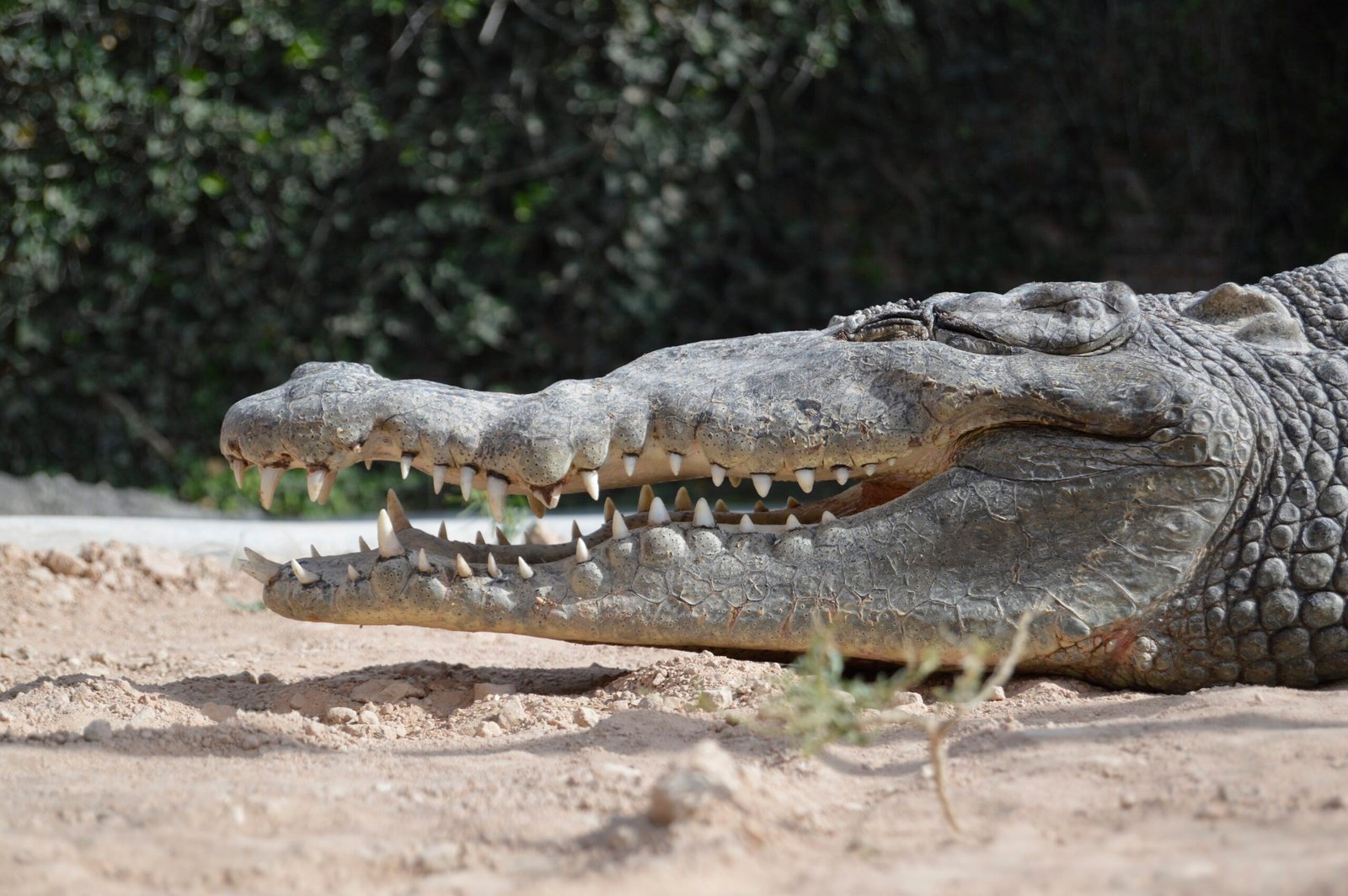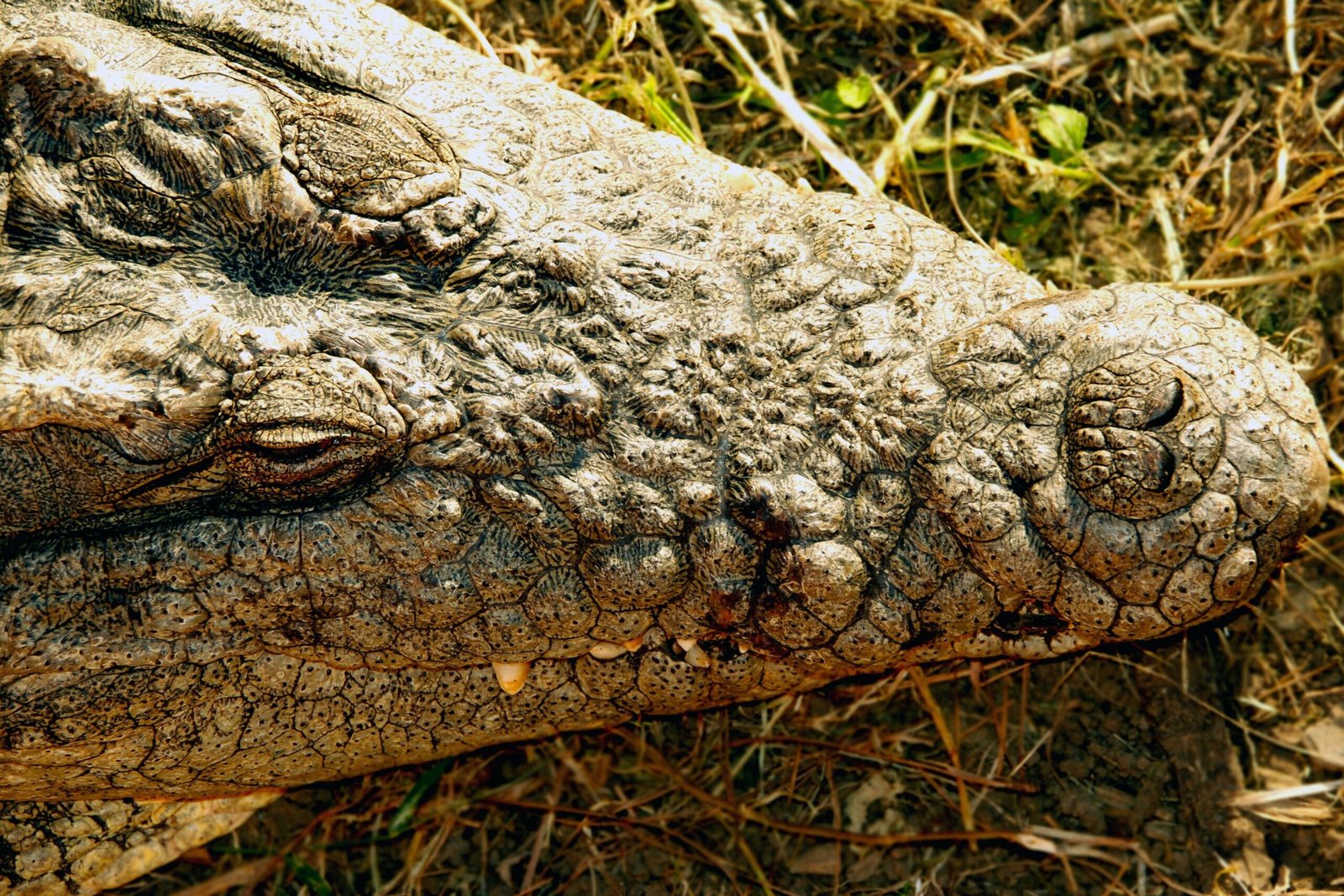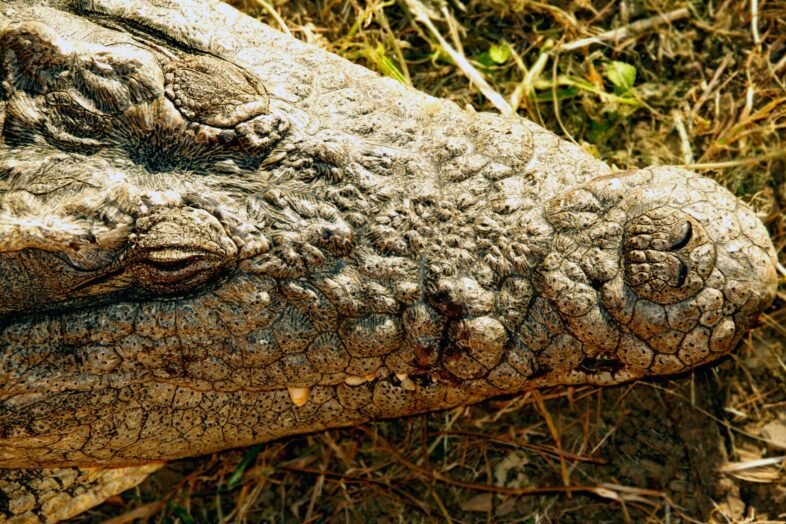In a recent incident that seems straight out of a movie, Australian cattle rancher Colin Deveraux survived a terrifying crocodile attack by biting back. After being latched onto by a ten-foot saltwater crocodile near the Finniss River in Darwin, Deveraux fought for his life by biting the croc’s eyelid and managed to escape. Despite sustaining serious injuries, including a deep wound that required constant cleaning, Deveraux considers himself lucky to be alive. This harrowing encounter is just one of several crocodile attacks in Australia in recent months, highlighting the importance of knowing how to survive such encounters.

This image is property of images.unsplash.com.
Preparing for a Crocodile Attack
Understanding Crocodile Behavior
Before facing a crocodile attack, it is crucial to have a good understanding of crocodile behavior. Crocodiles are aggressive predators and have a strong natural instinct to attack when they feel threatened or perceive their territory is being invaded. They are known for their powerful jaws and sharp teeth, which they use to catch and kill their prey. Additionally, crocodiles are excellent swimmers and can move swiftly in the water, making them even more dangerous. By understanding their behavior, you can better prepare yourself for a potential encounter.
Identifying High-Risk Areas
Crocodile attacks are more likely to occur in certain areas where these reptiles are known to inhabit. These high-risk areas often include rivers, lakes, swamps, and coastal regions where crocodiles have easy access to water and a sufficient food supply. It is important to be knowledgeable about the specific locations in your area that are known to have a high population of crocodiles. This information can be obtained from local authorities or wildlife management agencies. By avoiding these areas or taking extra precautions when visiting them, you can significantly reduce the risk of encountering a crocodile.
Gathering Essential Supplies
When venturing into areas where crocodile attacks are possible, it is essential to gather essential supplies that can aid in your survival and increase your chances of escaping an attack. These supplies may include a first aid kit, a survival whistle, a flashlight, a knife, and waterproof communication devices, such as a mobile phone or a radio. Additionally, it is advisable to carry a strong and durable stick that can be used as a tool for self-defense. These supplies should be easily accessible and kept in a waterproof bag or container to protect them from water damage and ensure they are readily available in the event of an attack.
During a Crocodile Attack
Stay Calm and Assess the Situation
During a crocodile attack, it is crucial to remain calm and assess the situation quickly. Panicking can impair your ability to think clearly and react appropriately, increasing the risk of further injury. Take a deep breath and try to stay as still as possible to avoid agitating the crocodile further. Assess the crocodile’s behavior to determine if it is in a state of aggression or if it is merely defensive. This assessment can help you make informed decisions on how to proceed and defend yourself effectively.
Use Distractions to Deter the Crocodile
When faced with a crocodile attack, using distractions can be an effective strategy to deter the animal and create an opportunity for escape. Crocodiles are attracted to movement and may divert their attention if they perceive another potential target. If available, throw objects away from you to redirect the crocodile’s attention. This can include sticks, rocks, or any other objects in your immediate vicinity. By creating a distraction, you may be able to buy some time to distance yourself from the crocodile or find a safe location.
Defending Yourself Against a Crocodile
If the crocodile continues to approach or attack, defending yourself becomes essential. Your primary goal should be to protect your vital body parts, such as your head, neck, and torso. Using your hands and arms, attempt to shield these areas from the crocodile’s jaws. If you have a stick or any object at your disposal, use it to strike the crocodile’s sensitive areas, such as its eyes, snout, or throat. Targeting these vulnerable body parts may cause the crocodile to release its grip, giving you a chance to escape. Remember, every second counts during an attack, so be determined and persistent in your defense.
Escaping from a Crocodile’s Grip
Utilizing the Element of Surprise
Escaping from a crocodile’s grip requires a combination of strength, tactical thinking, and precise actions. One effective technique is to utilize the element of surprise. Crocodiles are known to have a strong grip, often referred to as the “death roll,” where they rapidly twist their bodies to disorient and incapacitate their prey. To counter this, you can catch the crocodile off guard by suddenly and forcefully pushing or striking it before it initiates the death roll. This unexpected action may disrupt the crocodile’s balance and buy you precious seconds to escape its grip.
Targeting Vulnerable Body Parts
When attempting to escape from a crocodile’s grip, targeting its vulnerable body parts can weaken its hold and increase your chances of breaking free. The eyes, snout, and throat are particularly sensitive areas that may cause the crocodile to release its grip if attacked. If possible, use your free hand or any available object to jab at the crocodile’s eyes or strike its snout forcefully. Alternatively, applying pressure to the crocodile’s throat can restrict its ability to breathe and weaken its grip. Be persistent and continue to target these vulnerable areas until you can safely escape.
Applying Pressure to Escape
While targeting vulnerable body parts can help weaken the crocodile’s grip, applying pressure in the right way can also aid in your escape. If the crocodile has clamped its jaws onto a specific body part, such as your leg or arm, try to push against the joint of its jaws using your other hand or a nearby object. Applying pressure in this manner may force the crocodile to release its grip, allowing you to free yourself. Additionally, using the heel of your foot to strike the crocodile’s snout or eyes can also provide a momentary distraction and help create an opportunity for escape.
Seeking Immediate Medical Attention
Controlling Bleeding and Preventing Infection
After successfully escaping from a crocodile attack, seeking immediate medical attention is crucial to ensure proper treatment of your wounds. Your priority should be to control bleeding and prevent infection. Apply direct pressure to any bleeding wounds using a clean cloth or your hand. Elevate the wounded area if possible to decrease blood flow. Avoid washing the wounds with dirty water or applying any substances that could further contaminate them. It is advisable to keep the wounds as clean and dry as possible until you can receive professional medical assistance.
Transporting and Treating the Wounds
Transporting yourself or the injured person safely to a medical facility is essential for proper treatment of crocodile attack injuries. If possible, call emergency services for assistance and follow their instructions. When transporting the injured person, avoid any activities or movements that could worsen their condition or cause additional harm. Try to keep them as comfortable and stable as possible. Once at the medical facility, healthcare professionals will assess and treat the wounds accordingly, which may involve cleaning, suturing, or other procedures to promote healing and prevent complications.

This image is property of images.unsplash.com.
Learning from Survivors’ Stories
Val Plumwood’s Experience: Anticipating the Death Roll
Val Plumwood’s harrowing experience surviving a crocodile attack in Australia’s Kakadu National Park provides valuable insights into anticipating a crocodile’s “death roll” maneuver. Plumwood’s story highlights the importance of understanding and recognizing the signs that a crocodile is preparing to perform the death roll. By being aware of these signs, such as sudden movements or changes in the crocodile’s body position, individuals can react swiftly and take appropriate action to protect themselves. Plumwood’s survival is a testament to the significance of knowledge and preparedness in overcoming such a life-threatening situation.
Colin Deveraux’s Experience: Biting the Crocodile’s Eyelid
Colin Deveraux’s survival from a crocodile attack by biting the crocodile’s eyelid demonstrates the effectiveness of unconventional tactics in desperate situations. Deveraux’s quick thinking and use of his teeth to bite the crocodile’s eyelid allowed him to release himself from its grip and escape. While this approach may not always be applicable or feasible, it emphasizes the importance of using any available means to fight back against the crocodile and create an opportunity for survival. Deveraux’s story serves as a reminder that resourcefulness and determination can make a difference in life-or-death situations.
Preventing Crocodile Attacks
Educating the Public about Crocodile Behavior
One of the key steps in preventing crocodile attacks is educating the public about crocodile behavior and the risks associated with encounters. This education should focus on raising awareness about high-risk areas, common triggers for crocodile aggression, and strategies for avoiding or mitigating potential dangers. Promoting educational programs, public service announcements, and community workshops can help disseminate this information and ensure that individuals have the necessary knowledge to make informed decisions when in crocodile habitats.
Implementing Safety Measures in High-Risk Areas
To further prevent crocodile attacks, it is crucial to implement safety measures in high-risk areas. This can include the installation of warning signs, fencing, or barriers to deter crocodiles from entering areas where human activities take place. Additionally, designated swimming areas with enclosed boundaries can provide a safe environment for people to enjoy recreational activities without the risk of crocodile encounters. By proactively implementing safety measures, authorities can significantly reduce the likelihood of crocodile attacks and protect individuals in vulnerable areas.

This image is property of images.unsplash.com.
Crocodile Attacks in Australia
Recent Incidents of Crocodile Attacks in Australia
While crocodile attacks in Australia are relatively rare, recent incidents highlight the occasional encounters between humans and these formidable reptiles. The attacks serve as a reminder that individuals must remain vigilant and take appropriate precautions when in crocodile-inhabited areas. These incidents also provide real-life examples of survival and highlight the importance of understanding crocodile behavior and employing effective defense strategies during an attack.
Understanding the Rarity of Crocodile Attacks in Australia
Although there have been instances of crocodile attacks in Australia, it is essential to recognize that such incidents are still relatively rare. The country has implemented stringent measures to manage crocodile populations and reduce the risk to human safety. Through public education, controlled hunting programs, and the establishment of protected areas, authorities aim to strike a balance between conserving these ancient reptiles and ensuring the safety of individuals in crocodile habitats. Understanding the rarity of crocodile attacks in Australia helps dispel unnecessary fear while emphasizing the need for preparedness and caution in these environments.
Conclusion
Being prepared for a potential crocodile attack is essential for minimizing the risks associated with encounters and increasing the chances of survival. Understanding crocodile behavior, identifying high-risk areas, and gathering essential supplies form the foundation of preparedness. During an attack, staying calm, using distractions, and defending yourself against the crocodile are key strategies. If caught in a crocodile’s grip, utilizing the element of surprise, targeting vulnerable body parts, and applying pressure can aid in escaping. Seeking immediate medical attention, learning from survivors’ stories, and taking preventive measures further enhance safety. By applying these guidelines and promoting awareness, individuals can navigate crocodile habitats with greater confidence, all while respecting the natural environment and the extraordinary creatures that inhabit it.
Hi there! I’m the Editor, experienced outdoor development specialist, mountaineer and the mind behind ‘Country Rambler.’ I’m thrilled to welcome you to our website, your go-to destination for all things hill walking and rambling. Whether you’re an experienced adventurer or just dipping your toes into the great outdoors, I’ve got you covered. From providing guidance on essential gear, like boots and jackets, to sharing trail tips that range from peaceful paths to challenging peaks, I’ve got everything you need to embark on your next adventure. Stay in the loop with our fresh news updates and trail information. So, lace up those boots and join me as we explore the breathtaking landscapes together. Happy wandering!

